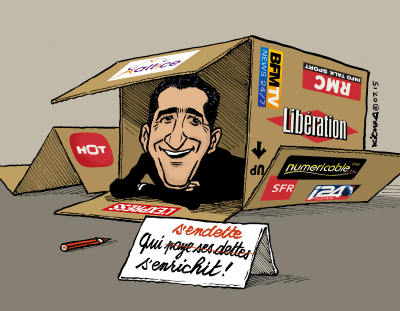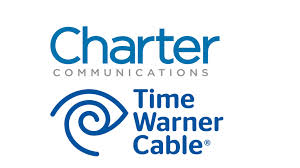 California’s Public Utilities Commission (CPUC) couldn’t get cozier with AT&T if they moved regulators into the phone company’s plush executive suites.
California’s Public Utilities Commission (CPUC) couldn’t get cozier with AT&T if they moved regulators into the phone company’s plush executive suites.
In a 3-2 decision, the CPUC has given California phone companies that cannot manage to keep their wireline networks in good order an early Christmas, allowing the companies to effectively fine themselves for bad performance and keep the money.
Although the CPUC adopted a series of “automatic fines” for companies with chronic service problems (AT&T is by far the largest offender), it completely negated any sting by allowing companies to skip the fine by demonstrating they’ve invested at least twice the amount of the penalty in their networks. That is an expense AT&T’s bookkeepers can manage to document in minutes just by highlighting AT&T’s investments in other parts of the state. AT&T can argue investments in gigabit fiber in southern California or wiring fiber to business parks and cell sites improves service reliability for at least some customers.
CPUC president Michael Picker isn’t in any hurry either, helpfully offering AT&T and other phone companies two years to complete the investments that will cancel their fines:
In support of a request to suspend the fine, carriers may propose, in their annual fine filing, to invest no less than twice the amount of their annual fine in a project (s) which improves service quality in a measurable way within 2 years. The proposal must demonstrate that 1) twice the amount of the fine is being spent, 2) the project (s) is an incremental expenditure with supporting financials (e.g. expenditure is in excess of the existing construction budget and/or staffing base), 3) the project (s) is designed to address a service quality deficiency and, 4) upon the project (s) completion, the carrier shall demonstrate the results for the purpose proposed. Carriers are encouraged to review their service quality results to find appropriate target projects to invest funds.
Consumer advocates have accused AT&T of underinvesting in their wireline facilities for years. Because the CPUC does not require the investment be specifically targeted to correcting problems that prompted the fine, phone companies can continue to allow high cost/low profit rural infrastructure to deteriorate while targeting service-improving investments in more profitable or competitive service areas.
Steve Blum from Tellus Venture Associates, who has closely tracked telecom public policy matters in California for years, called it the most cynical decision he’s ever seen from the CPUC:
Fines, it seems, are just another cost of doing business for telecoms companies and don’t matter anyway. So why not let them keep the money?
Boiled down, that’s CPUC president Michael Picker’s rationale for establishing new telephone voice service level requirements backed up by a swinging schedule of penalties and then saying but we’ll let you keep the money if you invest it in infrastructure or pay staff. Or something. Anything.

Picker
Commissioner Mike Florio called the Picker’s proposal “unenforceable.”
The CPUC’s own staff has documented the troubling condition of landline service in the state. A staff report published in September 2014 showed the largest phone companies in the state — AT&T and Verizon (later sold to Frontier Communications) — that control 88% of landlines in California never met the CPUC’s minimum standard of repairing 90% of “out of service” trouble tickets within 24 hours during 2010-2013.
In 2010 and 2011, AT&T and Verizon needed an average of 110 hours to repair 90% of outages. That is 4.5 days. In 2012 and 2013, repair time marginally improved to an average of 72 hours (3 days). That is three days without any phone service or the ability to call 911, something the CPUC staff said compromised public safety.
AT&T and Verizon have papered the CPUC’s walls with “corrective action reports” over the years explaining why they failed to meet CPUC standards and what actions they planned to take to improve compliance. The staff report found those reports never resulted in improved compliance.
Commissioner Catherine Sandoval submitted an alternative plan of simple fines and a reporting system that gives equal weight to outages occurring in areas served by independent phone companies like Citizens Telecommunications Company of California (d/b/a Frontier) and SureWest Telephone (d/b/a Consolidated Telephone). Picker didn’t bother to hold a vote on Sandoval’s proposal, instead bringing his own proposal to the commission that approved it on a 3-2 voice vote. Florio and Sandoval voted no.
Despite the easy out, the state’s phone companies are still complaining the fine system was unnecessary because the free market was best equipped to manage service outages. If customers don’t like their provider, they can switch, assuming there is another provider available in the large rural and mountainous parts of the state.


 Subscribe
Subscribe
 Some of the money flowing through Altice’s coffers comes from the French taxpayer, currently footing the bill for unpopular French President François Hollande’s key measure to boost the competitiveness of French companies — the Tax Credit for Competitiveness and Employment (CICE), which significantly cuts employer’s labor expenses. Altice has been a grateful recipient of this gift from French taxpayers, who
Some of the money flowing through Altice’s coffers comes from the French taxpayer, currently footing the bill for unpopular French President François Hollande’s key measure to boost the competitiveness of French companies — the Tax Credit for Competitiveness and Employment (CICE), which significantly cuts employer’s labor expenses. Altice has been a grateful recipient of this gift from French taxpayers, who 
 Altice-owned SFR Francophone call center workers face even bigger challenges from relentless demands for cost cuts. In 2015, Altice announced it was open to
Altice-owned SFR Francophone call center workers face even bigger challenges from relentless demands for cost cuts. In 2015, Altice announced it was open to  For now, those decisions are mostly made by Altice’s cable company call center workers and some members of middle management. But Patrick Drahi’s long-term plan to conquer the media business depends on implementing his “convergence” strategy, which means owning and controlling not only the means of distribution, but also the product being distributed. l’Humanité compared Drahi’s business to a multibillion cephalopod, with octopus-like tentacles extending his control and influence well beyond the cable business.
For now, those decisions are mostly made by Altice’s cable company call center workers and some members of middle management. But Patrick Drahi’s long-term plan to conquer the media business depends on implementing his “convergence” strategy, which means owning and controlling not only the means of distribution, but also the product being distributed. l’Humanité compared Drahi’s business to a multibillion cephalopod, with octopus-like tentacles extending his control and influence well beyond the cable business.

 If you live in parts of the Hudson Valley (N.Y.) or Ohio where Frontier Communications provides phone service, Vantage TV may be coming to your neighborhood soon.
If you live in parts of the Hudson Valley (N.Y.) or Ohio where Frontier Communications provides phone service, Vantage TV may be coming to your neighborhood soon. Vantage TV offers up to 300 channels typically bundled with phone and internet service. Customers are provided a “total-home DVR” with 1TB of storage that can record up to six shows at the same time and played back on up to four wireless cable boxes attached to different televisions. An upgraded version 3.0 of Ericsson’s Mediaroom platform offers advanced set-top box features like improved visual search and the ability to watch up to four channels at once in a mosaic. Another feature lets customers bring up a small video screen showing another channel, useful if you are channel surfing during an ad break.
Vantage TV offers up to 300 channels typically bundled with phone and internet service. Customers are provided a “total-home DVR” with 1TB of storage that can record up to six shows at the same time and played back on up to four wireless cable boxes attached to different televisions. An upgraded version 3.0 of Ericsson’s Mediaroom platform offers advanced set-top box features like improved visual search and the ability to watch up to four channels at once in a mosaic. Another feature lets customers bring up a small video screen showing another channel, useful if you are channel surfing during an ad break. Connecticut, in contrast, is served with a mix of fiber and old copper wiring that has been in place for decades, since the days the state was served by the independent Southern New England Telephone Company. Learning how to deliver reasonable video quality over copper wires in Connecticut gave Frontier experience to go ahead with targeted upgrades that can boost broadband speeds and deliver HD video over an internet connection as low as 2.6Mbps in other states.
Connecticut, in contrast, is served with a mix of fiber and old copper wiring that has been in place for decades, since the days the state was served by the independent Southern New England Telephone Company. Learning how to deliver reasonable video quality over copper wires in Connecticut gave Frontier experience to go ahead with targeted upgrades that can boost broadband speeds and deliver HD video over an internet connection as low as 2.6Mbps in other states. Charter Communications is promising its Southern California customers it won’t bungle the transition from Time Warner Cable to Charter Communications like Frontier Communications
Charter Communications is promising its Southern California customers it won’t bungle the transition from Time Warner Cable to Charter Communications like Frontier Communications  But not all customers are happy about Charter’s slow transition plans. Customers waiting for Time Warner Cable Maxx upgrades, some already in progress, may be out of luck. Charter’s new management team put an indefinite hold on Time Warner’s more aggressive upgrade plans in favor of Charter’s much more modest commitment to offer customers two broadband speed tiers – 60 and 100Mbps over the next 18 months. Customers in the northeast and midwest have been told there are no longer any definitive dates for the introduction of Maxx, which offers free speed upgrades up to 300Mbps.
But not all customers are happy about Charter’s slow transition plans. Customers waiting for Time Warner Cable Maxx upgrades, some already in progress, may be out of luck. Charter’s new management team put an indefinite hold on Time Warner’s more aggressive upgrade plans in favor of Charter’s much more modest commitment to offer customers two broadband speed tiers – 60 and 100Mbps over the next 18 months. Customers in the northeast and midwest have been told there are no longer any definitive dates for the introduction of Maxx, which offers free speed upgrades up to 300Mbps.